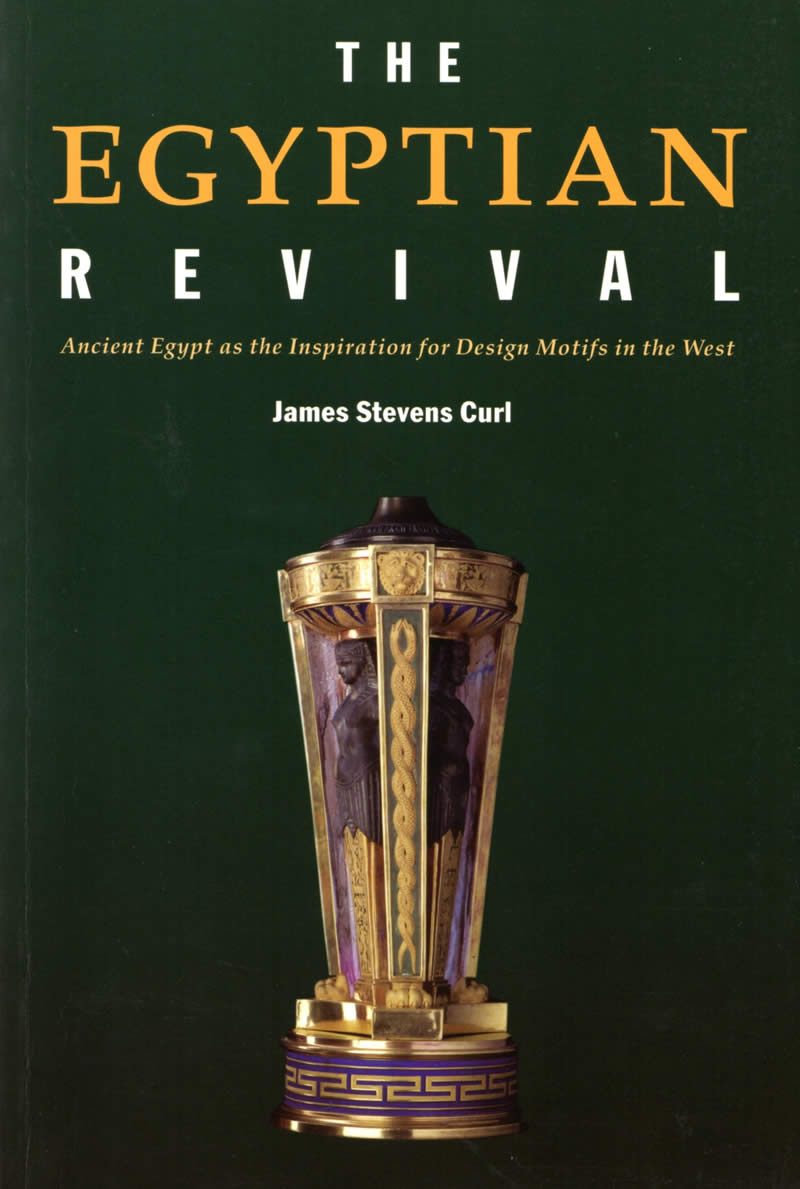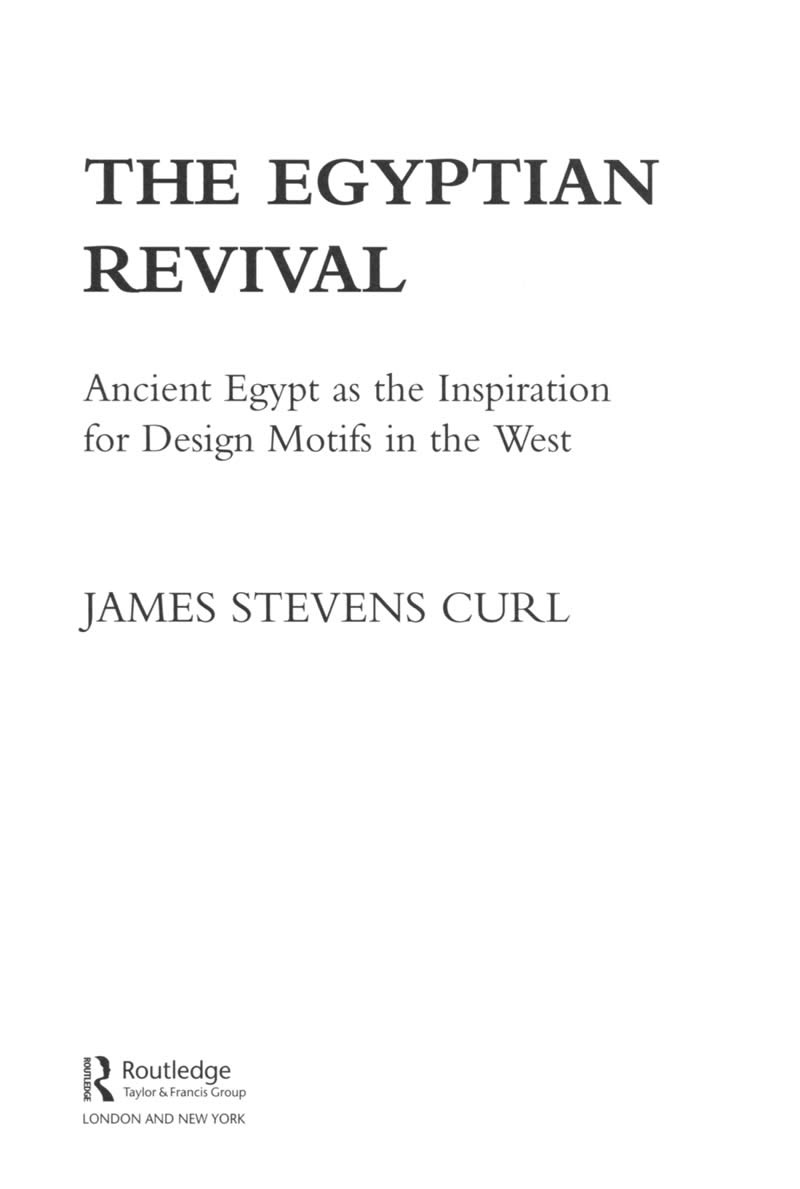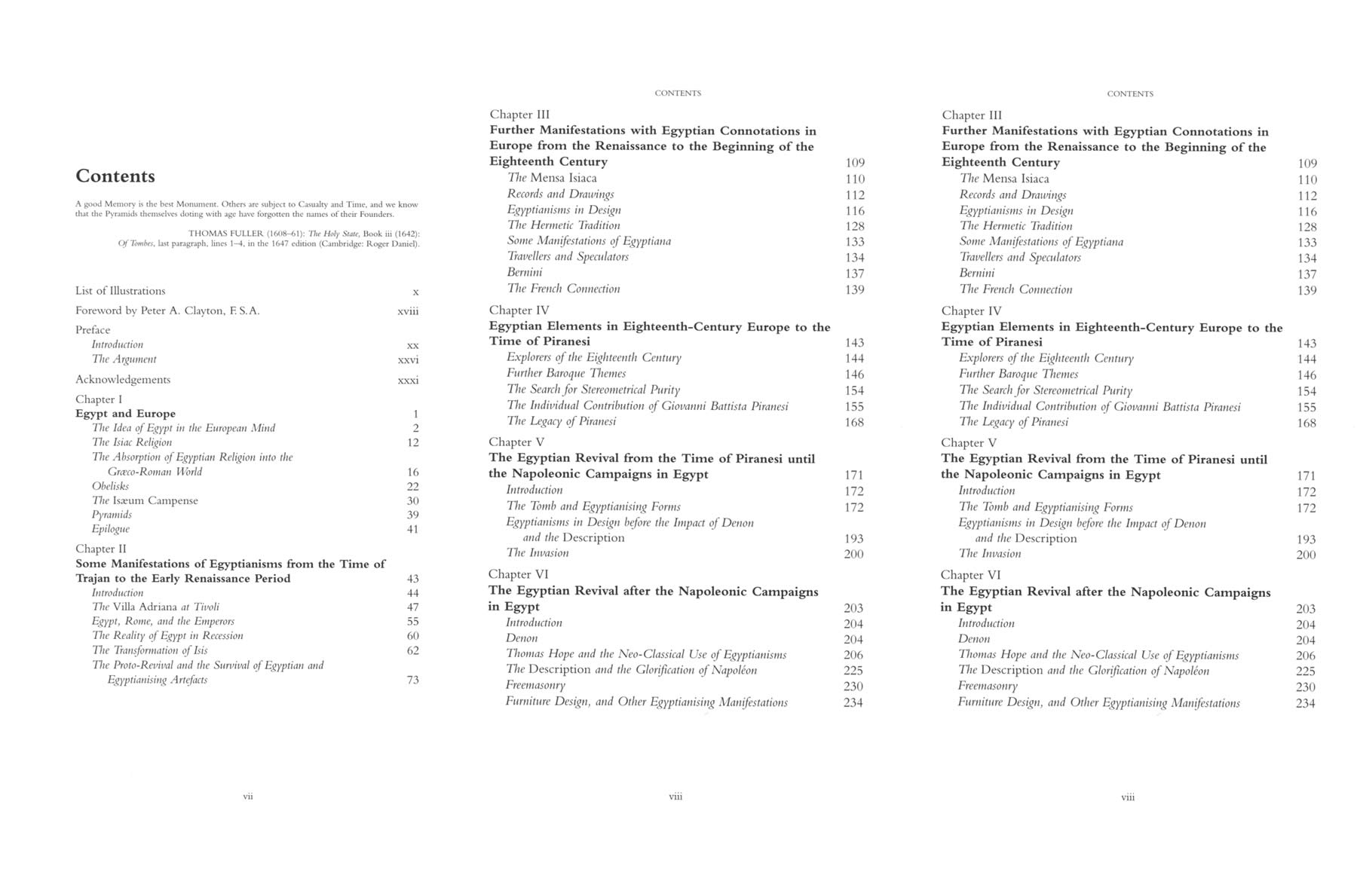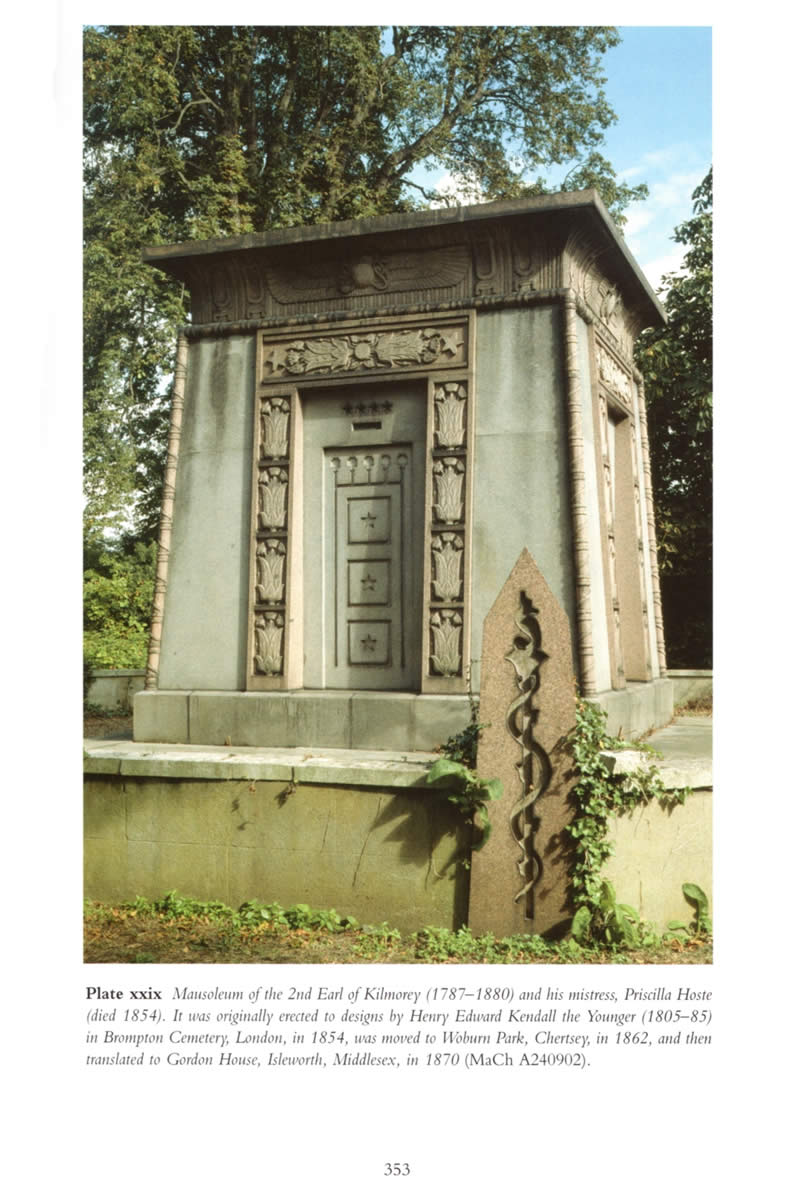The Egyptian Revival: Ancient Egypt as the Inspiration for Design Motifs in the West

Author : James Stevens Curl
Publisher : Abingdon & New York: Routledge Taylor & Francis Group, 2005
ISBN:-10: 0-415-36119-2 (hbk)
ISBN: 0-415-36118-4 (pbk)
In this comprehensively illustrated and closely argued book, a completely updated and much expanded third edition of earlier versions, the numerous revivals of the Egyptian style from Antiquity to the present day are described, drawing on a wealth of sources. It analyses the remarkable and persistent influence of Ancient Egyptian culture on the West, developing the argument that the civilisation of Ancient Egypt is central, rather than peripheral, to the evolution of much Western architecture, art, design, and religion. The persistence of Egyptian motifs in design from Graeco-Roman Antiquity, through the Mediaeval, Renaissance, Baroque, and Neo-Classical periods, is charted, and the rise of Egyptology in the nineteenth century, twentieth-century manifestations of Egyptianisms prompted by the discovery of Tutankhamun's tomb, and various aspects of Egyptianising tendencies in the Art-Deco style and afterwards are all traced. Most startling of all, the book argues that Christianity owes as much, and probably more, to the Nile as to the Jordan.
Earlier editions of this study were:
The Egyptian Revival: an Introductory Study of a recurring Theme in the History of Taste (Hemel Hempstead, Winchester, MA, and Sydney, NSW: George Allen & Unwin [Publishers] Ltd., 1982, ISBN: 0-04-724001-6 [hbk.]); and
Egyptomania. The Egyptian Revival: a Recurring Theme in the History of Taste (Manchester & New York: Manchester University Press, 1994, ISBN: 0-7190-4126-0 [hbk.], & 0-7190-4127-9 [pbk.]).
Reviews
‘...a fascinating and thoroughly researched volume... Curl’s thesis is … illustrated with over 250 plates in colour and black and white, each with an extensive caption. The author is careful to point out that this is not a comprehensive catalogue, but there cannot be many examples that he has missed in this tour de force ... Another fascinating revelation is the author’s convincing argument that in liturgy and beliefs the cult of the Egyptian goddess Isis was a real influence on the early Christian church — “the resemblances between Isis and the Virgin Mary are far too close and numerous to be accidental”. Curl’s study....is a revelation in text and illustration.’
‘The third, much expanded, edition of what has now become a classic. The lure of ancient Egypt has proved compelling for many European generations.’
‘If you want to know anything about the Egyptian Revival, then here is the place to start. This book is explicitly not a catalogue, but, with over 550 pages including 55 of glossary and 60 of bibliography, if anything has been left out, it cannot be very important.’
‘The historical and geographical scope of Curl’s survey is impressive and the huge range of examples he employs is convincing... The Egyptian Revival is a fantastic source book. There is certainly no doubting the breadth of evidence collected by Professor Curl over the past four decades...’
‘This book has a distinguished lineage, being essentially the third edition of Curl’s classic study, first published in 1982… Here the book not only makes a very welcome return into print, but has also been heavily revised and expanded from the ground up, as it were. This edition has the added advantage over previous ones of 40 colour plates, as well as the extraordinary number of illustrations (many from the author’s own collection) that present so many facets in varying media of ‘Egyptianising’ in the western world from Roman times to the modern day… The Egyptian Revival is an international phenomenon mostly crystallised in the last four centuries, and still with us today. To the intricacies of interpretation and influence in various western countries, architecture, painting, decorative arts, media, and thought there can be no better guide than Professor Curl’s in depth and perceptive study.’
‘The third edition of this classic reference on the history of the Egyptian Revival… has been updated and expanded… This is… an invaluable source … and… has almost doubled in content. The return of The Egyptian Revival is most welcome. For many readers it will be sufficiently comprehensive to serve as the definitive reference. For the more serious student, Curl’s authoritative book, with its lavish illustrations, copious footnotes, and careful indexing, provides clues and directions for more detailed studies… I can heartily recommend this third edition to anyone who is interested in learning about the Egyptian Revival.’
‘Curl has read everything relevant, and noted, every building, drawing, and detail that could conceivably be described as “Egyptian Revival”, including road bridges over the M1, lighthouse keepers’ cottages in Scotland, the trappings of an eighteenth-century royal funeral in Sweden, and a cinema on the Boulevard Magenta in Paris. Add to such a fascinatingly inclusive text 219 monochrome illustrations with forty more in colour, and it becomes safe to predict that this will be the definitive work on the subject.’
‘It is hard to imagine a more stimulating or comprehensive work on this subject, which has been exercising Curl’s attention since he published his first book on it nearly a quarter of a century ago. In this, the latest mammoth edition, it has grown to 572 pages and 259 plates, of which 40 are in colour. Every book Curl writes is distinguished by his rare and compelling combination of passion and scholarship. …With its illustrative glossary and full bibliography, Curl’s masterly book will be the definitive study for many years.’
‘The distinguished author of this book… (has)… an international reputation as an eminent architectural historian and author of scholarly works… For a detailed and well-researched history of the various manifestations of the Egyptian Revival and the cultural contexts in which Egyptianising forms in art and architecture have flourished, Curl’s Egyptian Revival must surely be a standard reference for years to come.’
‘…fascinating and provocative… Curl’s argument is that Egyptian motifs were absorbed into Greek and then Graeco-Roman culture at least from the era of Alexander the Great, and can be traced almost continuously ever since; his vigorous and scholarly narrative is particularly valuable in uncovering unexpected fusions of ideas throughout history, and in challenging the conventional impression that the Egyptian revival somehow belongs to the 1800s and the 1920s alone. Many additions have been made to the earlier versions of this book: in particular, there are lengthy new sections on the fate of antique obelisks and on Hadrian’s Villa at Tivoli, as well as several interesting insertions on funerary architecture… There are more than a hundred new illustrations, including two colour sections, and the glossary has been greatly enhanced.’
‘Curl is among the most productive of architectural historians writing today....His book, a major study of synthesis, grew out of a visit in 1960 to Salzburg that took in an exhibition of Schinkel’s designs for The Magic Flute. One of the many impressive aspects is the author’s equal familiarity with continental and British sources.... Densely scholarly, with an extremely useful fifty-five-page glossary and a sixty-one-page bibliography, the book impresses with its depth of learning and deftness of connections. Equally, it stimulates with its dynamic and opinionated analyses of a vast range of tributes to the enduring lure of the Nilotic style.’




 LinkedIn
LinkedIn  Wikipedia
Wikipedia